Using Digital Technology for the Sustainable Preservation of Clothing Heritage: A Virtual Reconstruction of the 1848/49 Uniform
Abstract
:1. Introduction
1.1. State of the Art in the Sustainable Preservation of Clothing Heritage
1.2. Uniform of the Slovenian National Guard
2. Methods
2.1. An Analysis of the Construction of the Uniform of the Maribor National Guard from 1848/49
2.2. Decomposition of the Uniform Pattern Design of the Maribor National Guard of 1848/49
2.3. Creation of the 3D Body Models
2.4. Virtual 3D Simulation and Visualisation of the Uniform
3. Results and Discussion
3.1. Reconstruction of Uniform Pattern Design
3.2. Three-Dimensional Body Models
3.3. Virtual Reconstruction of the Maribor National Guard Uniform of 1848/49
4. Conclusions
Author Contributions
Funding
Institutional Review Board Statement
Informed Consent Statement
Data Availability Statement
Conflicts of Interest
References
- European Parliament and Council. Council Resolution on the EU Work Plan for Culture 2023–2026. Off. J. Eur. Union 2020, 1, 1–18. Available online: https://eur-lex.europa.eu/legal-content/SL/TXT/?uri=CELEX:32022G1207(01) (accessed on 13 April 2024).
- European Commission. European Frameork for Action on Cultural Heritage. Commission Staff Working Document. 2019. Available online: https://op.europa.eu/sl/publication-detail/-/publication/5a9c3144-80f1-11e9-9f05-01aa75ed71a1 (accessed on 13 April 2024).
- European Commission. Communication from the Commission to the European Parliament, the Council, the European Economic and Social Committee and the Committee of the Regions. A New European Agenda for Culture. 2018. Available online: https://eur-lex.europa.eu/legal-content/en-sl/TXT/?from=EN&uri=CELEX%3A52018DC0267 (accessed on 13 April 2024).
- European Commission. Communication from the Commission. The European Green Deal. 2019. Available online: https://commission.europa.eu/publications/communication-european-green-deal_en (accessed on 10 February 2024).
- United Nations. Transforming our world: The 2030 Agenda for Sustainable Development. 2015. Available online: https://www.gov.si/assets/ministrstva/MZZ/Dokumenti/multilaterala/razvojnosodelovanje/publikacije/Agenda_za_trajnostni_razvoj_2030.pdf (accessed on 22 July 2024).
- United Cities and Local Governments. SDG 11.4 Culture and Heritage for More Sustainable, Inclusive and Open Cities and Societies. 2019. Available online: https://www.agenda21culture.net/sites/default/files/hlpf12018_-_11.4.pdf (accessed on 15 May 2024).
- Tajuddin, F.N. Cultural and Social Identity in Clothing Matters Different Cultures, Different Meanings. Eur. J. Behav. Sci. 2018, 4, 21–25. [Google Scholar]
- Bichler, P.; Grömer, K.; Hofmann-de Keijzer, R.; Kern, A.; Reschreiter, H. Hallstatt Textiles: Technical Analysis, Scientific Investigation and Experiment on Iron Age Textiles; Archaeopress: Oxford, UK, 2005. [Google Scholar]
- Grömer, K. Prähistorische Textilkunst in Mitteleuropa: Geschichte des Handwerkes und Kleidung vor den Römern; Naturhistorisches Museum Wien: Wien, Austria, 2010. [Google Scholar]
- Gong, Y.; Li, Z.; Hu, J.; Zhou, G.; Xu, G.; Yang, W.; Zhang, J. Insight into the measurements for determining the ageing degree of ancient silk. Polym. Degrad. Stab. 2022, 196, 109833. [Google Scholar] [CrossRef]
- Ferreira, E.S.; Hulme, A.N.; McNab, H.; Quye, A. The natural constituents of historical textile dyes. Chem. Soc. Rev. 2004, 33, 329–336. [Google Scholar] [CrossRef]
- European Commission. Cultural heritage: Digitisation, Online Accessibility and Digital Preservation. Consolidated Progress Report on the Implementation of Commission Recommendation (2011/711/EU) 2015–2017. 2018. Available online: https://digital-strategy.ec.europa.eu/en/library/european-commission-report-cultural-heritage-digitisation-online-accessibility-and-digital (accessed on 13 April 2024).
- Zhang, S.C.; Kuzmichev, V.E.A. Method of Selection the Textile Materials for Virtual Reconstruction. In Proceedings of the IOP Conference Series: Materials Science and Engineering, International Conference on Technics, Technologies and Education 2020 (ICTTE 2020), Yambol, Bulgaria, 4–6 November 2020. [Google Scholar]
- Kuzmichev, V.; Moskvin, A.; Moskvina, M.; Adolphe, D. Reconstruction of historical textile fabrics and dresses in virtual reality. In Proceedings of the AUTEX2019–19th World Textile Conference on Textiles at the Crossroads, Ghent, Belgium, 11–15 June 2019. [Google Scholar]
- Ali, A.; Elfaky, E.; Mohammed, S.; Haroon, H.; Eshag, I.; Hassan, E. Textile recycling—A review. Glob. J. Eng. Technol. Adv. 2021, 6, 69–74. [Google Scholar] [CrossRef]
- Italiano, I.C.; Kauvauti, L.S.; Marcicano, J.P.P. Zero Waste in apparel industry: Limitations and alternatives. Sustentabilidade Em Debate 2022, 13, 204–219. [Google Scholar]
- Choi, C. 3D dynamic fashion design development using digital technology and its potential in online platforms. Fash. Text. 2022, 9, 9. [Google Scholar] [CrossRef]
- McQuillan, H. Digital 3D design as a tool for augmenting zero-waste fashion design practice. Int. J. Fash. Des. Technol. Educ. 2020, 13, 89–100. [Google Scholar] [CrossRef]
- Rajasekaran, P. Achieving sustainability in fashion: Scope of recycled fabric waste in sustainable production of fashion apparel. Int. J. Sci. Res. Eng. Manag. 2022, 6, 279–290. [Google Scholar] [CrossRef]
- Lim, H.-W. A systematic review of zero waste fashion construction techniques. In Proceedings of the 91st Textile Institute World Conference (TIWC): Integrating Design with Sustainable Technology, Leeds, UK, 23–26 July 2018. [Google Scholar]
- McQuillan, H. Zero Waste Design Thinking. Ph.D. Thesis, University of Borås, Borås, Sweden, 2019. [Google Scholar]
- Sandin, G.; Peters, G.M.; Svanström, M. Moving down the cause-effect of water and land use impacts: An LCA case study. Resour. Conserv. Recycl. 2013, 73, 104–113. [Google Scholar] [CrossRef]
- Roy Choudhury, A.K. Environmental Impacts of the Textile Industry and Its Assessment Through Life Cycle Assessment. In Roadmap to Sustainable Textiles and Clothing: Environmental and Social Aspects of Textiles and Clothing Supply Chain; Muthu, S.S., Ed.; Springer: Singapore, 2014; pp. 1–39. [Google Scholar]
- Luo, Y.; Ding, X. Life Cycle Environmental Impact Assessment of Textiles and Apparel. In Proceedings of the IFFTI Annual Proceedings 2023, Aotearoa, New Zealand, 3–6 April 2023; Volume 2, pp. 284–299. [Google Scholar]
- Wiedemann, S.G.; Clarke, S.J.; Nguyen, Q.V.; Cheah, Z.X.; Simmons, A.T. Strategies to reduce environmental impacts from textiles: Extending clothing wear life compared to fibre displacement assessed using consequential LCA. Resour. Conserv. Recycl. 2023, 198, 107119. [Google Scholar] [CrossRef]
- Riedelsheimer, T.; Dorfhuber, L.; Stark, R. User centered development of a Digital Twin concept with focus on sustainability in the clothing industry. Procedia CIRP 2020, 90, 660–665. [Google Scholar] [CrossRef]
- Koomey, J.; Masanet, E. Does not compute: Avoiding pitfalls assessing the Internet’s energy and carbon impacts. Joule 2021, 5, 1625–1628. [Google Scholar] [CrossRef]
- Wagner, R.; Kabalska, A. Sustainable value in the fashion industry: A case study of value construction/destruction using digital twins. Sustain. Dev. 2022, 31, 1652–1667. [Google Scholar] [CrossRef]
- Pendergrass, K.L.; Sampson, W.; Walsh, T.; Alagna, L. Toward Environmentally Sustainable Digital Preservation. Am. Arch. 2019, 82, 165–206. [Google Scholar] [CrossRef]
- Arnold, J. Patterns of Fashion 1: Englishwomen’s Dresses and Their Construction C.1660-1860; Macmillan: New York, NY, USA, 1972. [Google Scholar]
- Liu, K.; Wu, H.; Gao, Y.; Zhu, C.; Ji, Y.; Lü, Z. Archaeology and Virtual Simulation Restoration of Costumes in the Han Xizai Banquet Painting. AUTEX Res. J. 2023, 23, 238–252. [Google Scholar] [CrossRef]
- Montusiewicz, J.; Miłosz, M.; Kęsik, J.; Żyła, K. Structured-light 3D scanning of exhibited historical clothing—A first-ever methodical trial and its results. Herit. Sci. 2021, 9, 74. [Google Scholar] [CrossRef]
- ISO 13937-2; Textiles—Tear Properties of Fabrics—Part 2: Determination of Tear Force of Trouser-Shaped Test Specimens (Single tear method). International Organization for Standardization: Geneva, Switzerland, 2000.
- ISO 13934-1; Textiles—Tensile Properties of Fabrics—Part 1: Determination of Maximum Force and Elongation at Maximum Force Using the Strip Method. International Organization for Standardization: Geneva, Switzerland, 2013.
- Sandström, E.; Vettorazzo, C.; Mackay, C.L.; Troalen, L.G.; Hulme, A.N. Development and Application of Desorption Electrospray Ionization Mass Spectrometry for Historical Dye Analysis. Anal. Chem. 2023, 95, 4846–4854. [Google Scholar] [CrossRef]
- Tamburini, D.; Dyer, J. Fibre optic reflectance spectroscopy and multispectral imaging for the non-invasive investigation of Asian colourants in Chinese textiles from Dunhuang (7th–10th century AD). Dye. Pigment. 2019, 162, 494–511. [Google Scholar] [CrossRef]
- Celani, C.P.; Degano, I.; Chen, C.; Jaeger, O.; Speed, A.M.; Booksh, K.S.; AlcantaraGarcia, J. Exploring elucidation of red dye mixtures on woolen historical textiles via non-destructive spectroscopic analysis and multivariate cluster analysis. Herit. Sci. 2024, 12, 48. [Google Scholar] [CrossRef]
- Liu, K.; Wu, H.; Ji, Y.; Zhu, C. Archaeology and Restoration of Costumes in Tang Tomb Murals Based on Reverse Engineering and Human-Computer Interaction Technology. Sustainability 2022, 14, 6232. [Google Scholar] [CrossRef]
- Liu, Y.; Zhang, B. Reconstruction and Digital Display Design of Women’s Clothing in Jiangnan Area of Yuan Dynasty under Digital. In Proceedings of the 2022 IEEE 21st International Conference on Ubiquitous Computing and Communications (IUCC/CIT/DSCI/SmartCNS), Chongqing, China, 19–21 December 2022. [Google Scholar]
- Zhu, C.; Liu, K.; Li, X.; Zeng, Q.; Wang, R.; Zhang, B.; Lü, Z.; Chen, C.; Xin, X.; Wu, Y.; et al. Research on Archaeology and Digital Restoration of Costumes in DaoLian Painting. Sustainability 2022, 14, 14054. [Google Scholar] [CrossRef]
- Liu, K.; Lu, S.; Zhao, J.; Jin, Z.; Zhu, C.; Zhu, K.; Hao, X.; Zhang, B.; Lü, Z.; Zeng, X. Research on Archaeology and Digital Restoration of Costumes in Spring Outing Painting of Madam Guo. Sustainability 2022, 14, 12243. [Google Scholar] [CrossRef]
- Liu, K.; Gao, Y.; Zhang, J.; Zhu, C. Study on digital protection and innovative design of Qin opera costumes. Herit. Sci. 2022, 10, 127. [Google Scholar] [CrossRef]
- Chen, H.A.N.; Xu, H.A.N.; Zhang, Y.; Wang, W.; Lu, Z. The restoration of garment heritages based on digital virtual technology: A case of the Chinese pale brown lace-encrusted unlined coat. Ind. Textila 2023, 74, 12–20. [Google Scholar] [CrossRef]
- Cassidy, T.; Zang, K.; Cassidy, T.; Li, D. Historical costume simulation. In Proceedings of the 2014 International Textiles and Costume Culture Congress, National Chonbuk University, Jeonju, Republic of Korea, 24–25 October 2014. [Google Scholar]
- Feng, G.; Li, K.; Xie, Z.; Kong, F. Study and Digital Restoration of Costumes Unearthed from the Tomb of Zhao Boyun. Fibres Text. East. Eur. 2023, 31, 56–65. [Google Scholar] [CrossRef]
- Ren, J.; Sun, Y.; Shu, X. Digital Twin of Overseas Opera Relics: Case Study of Arhat Costumes in the Collection of the Metropolitan Museum of Art. In Proceedings of the 2022 IEEE 21st International Conference on Ubiquitous Computing and Communications (IUCC/CIT/DSCI/SmartCNS), Chongqing, China, 19–21 December 2022. [Google Scholar]
- Carrière, M.; Skouras, M.; Hahmann, S. 3D Design of Ancient Garments. In Proceedings of the GCH 2019—EUROGRAPHICS Workshop on Graphics and Cultural Heritage, Sarajevo, Bosnia and Herzegovina, 6–9 November 2019. [Google Scholar]
- Wijnhoven, M.A.; Moskvin, A. Digital replication and reconstruction of mail armour. J. Cult. Herit. 2020, 45, 221–233. [Google Scholar] [CrossRef]
- Moskvin, A.; Wijnhoven, M.A.; Moskvina, M. The equipment of a Germanic warrior from the 2nd–4th century AD: Digital reconstructions as a research tool for the behaviour of archaeological costumes. J. Cult. Herit. 2021, 49, 48–58. [Google Scholar] [CrossRef]
- Moskvin, A.; Kuzmichev, V.; Moskvina, M. Digital replicas of historical skirts. J. Text. Inst. 2019, 12, 1810–1826. [Google Scholar] [CrossRef]
- Kuzmichev, V.; Moskvin, A.; Moskvina, M. Virtual Reconstruction of Historical Men’s Suit. Autex Res. J. 2018, 18, 281–294. [Google Scholar] [CrossRef]
- Zhang, S.C.; Kuzmichev, V.E. Method of historical pattern analyzing. In Proceedings of the IOP Conf. Series: Materials Science and Engineering, International Conference on Technics, Technologies and Education 2020 (ICTTE 2020), Yambol, Bulgaria, 4–6 November 2020. [Google Scholar]
- Moskvin, A.; Moskvina, M.; Kuzmichev, V. Block pattern generation of scanned historical garments. In Proceedings of the Higher Education Institutions, Textile Industry Technology, Saint Petersburg State University of Industrial Technologies and Design, Ivanovo State Polytechnical University: Ivanovo, Russia; 2022. [Google Scholar]
- Moskvin, A.; Moskvina, M.; Kuzmichev, V. Digital twins of textile materials for visualization of historical costumes. In Proceedings of the Higher Education Institutions, Textile Industry Technology, Saint Petersburg State University of Industrial Technologies and Design, Ivanovo State Polytechnical University, Ivanovo, Russia; 2022. [Google Scholar]
- Portalés, C.; Pérez, M.; Casanova-Salas, P.; Gimeno, J. Virtual Loom: A tool for the interactive 3D representation of historical fabrics. Multimed. Tools Appl. 2021, 80, 13735–13760. [Google Scholar] [CrossRef]
- Gaitán, M.; Alba, E.; León, A.; Pérez, M.; Sevilla, J.; Portalés, C. Towards the Preservation and Dissemination of Historical Silk Weaving Techniques in the Digital Era. Heritage 2019, 2, 1892–1911. [Google Scholar] [CrossRef]
- Lo Cicero, G.; Seidita, V.; Vitella, M.; Alba, E.; Gaitán, M.; Sebastián, J.; Fernández, M.; Portalés, C. Recovering Sicilian Silk Heritage through Digital Technologies: The Case of Piraino’s Collection. Heritage 2022, 5, 4245–4266. [Google Scholar] [CrossRef]
- Portalés, C.; Sebastián, J.; Alba, E.; Sevilla, J.; Gaitán, M.; Ruiz, P.; Fernández, M. Interactive Tools for the Preservation, Dissemination and Study of Silk Heritage—An Introduction to the SILKNOW Project. Multimodal Technol. Interact. 2018, 2, 28. [Google Scholar] [CrossRef]
- Gaitán, M.; Portalés, C.; Sevilla, J.; Alba, E. Applying Axial Symmetries to Historical Silk Fabrics: SILKNOW’s Virtual Loom. Symmetry 2020, 12, 742. [Google Scholar] [CrossRef]
- Pérez, M.; Casanova-Salas, P.; Twardo, P.; León, A.; Mladenic, D.; Massri, B.M.; Troncy, R.; Ehrhart, T.; Cicero, G.L.; Vitella, M. From Historical Silk Fabrics to Their Interactive Virtual Representation and 3D Printing. Sustainability 2020, 12, 7539. [Google Scholar] [CrossRef]
- Chai-Arayalert, S.; Suttapong, K.; Kong-Rithi, W. Systematic approach to preservation of cultural handicrafts: Case study on fabrics hand-woven in Thailand. Cogent Bus. Manag. 2021, 8, 1872889. [Google Scholar] [CrossRef]
- Pérez-Aixendri, M.; Casanova-Salas, P.; Gimeno, J.; Portalés, C.; Fernández, M. Model of yarn-level visualization of historical fabrics based on the use of levels of detail in Sphere Tracing. Comput. Graph. 2023, 115, 321–330. [Google Scholar] [CrossRef]
- Cybulska, M. Woman’s Costume in the Territories of Poland during the Roman Period. Reconstruction Based on Finds from Nowy Łowicz in Pomerania. Fibres Text. East. Eur. 2020, 28, 124–129. [Google Scholar] [CrossRef]
- Calvert, S.; Power, J.; Ryall, H.; Bills, P.J. Digital 3d Reconstruction of Historical Textile Fragment. In Proceedings of the Transition: Rethinking Textiles and Surfaces, Huddersfield, UK, 11 December 2014. [Google Scholar]
- Iacconi, C.; Autret, A.; Desplanques, E.; Chave, A.; King, A.; Fayard, B.; Moulherat, C.; Leccia, É.; Bertrand, L. Virtual technical analysis of archaeological textiles by synchrotron microtomography. J. Archaeol. Sci. 2023, 149, 105686. [Google Scholar] [CrossRef]
- Karjalainen, V.P.; Finnilä, M.A.J.; Salmon, P.L.; Lipkin, S. Micro-computed tomography imaging and segmentation of the archaeological textiles from Valmarinniemi. J. Archaeol. Sci. 2023, 160, 105871. [Google Scholar] [CrossRef]
- Lipkin, S.; Karjalainen, V.P.; Puolakka, H.L.; Finnilä, M.A.J. Advantages and limitations of micro-computed tomography and computed tomography imaging of archaeological textiles and coffins. Herit. Sci. 2023, 11, 231. [Google Scholar] [CrossRef]
- Maribor Regional Museum. Available online: https://museum-mb.si/ogledni-depo-uniform/ (accessed on 27 July 2024).
- Vrišer, S. Newspaper for History and Ethnography (Časopis za Zgodovino in Narodopisje—in Slovene); Založba Obzorja: Maribor, Slovenia, 1969; pp. 448–459. Available online: https://www.sistory.si/media/legacy/publikacije/6001-7000/6977/1969_5_Casopis_za_zgodovino_in_narodopisje.pdf (accessed on 22 July 2024).
- Pučko, B. Reconstruction of the Uniform of the Maribor National Guard from 1848/49. Diploma Thesis, University of Maribor, Faculty of Mechanical Engineering, Maribor, Slovenia, 2021. [Google Scholar]
- Müller, M.; Sohn. Historsche Schnitte; Rundschau-Verlag Otto G. Königer GmbH & Co: München, Germany, 2001. [Google Scholar]
- ISO 8559-1; Size Designation of Clothes—Part 1: Anthropometric Definitions for Body Measurement. ISO: Geneva, Switzerland, 2017.
- Ng, S.F.; Hui, C.L.; Tam, F.Y. Analysis of fabric drape and garment drape. Res. J. Text. Appar. 2003, 6, 65–74. [Google Scholar] [CrossRef]
- Lim, H.; Istook, C.L. Drape simulation of three-dimensional virtual garment enabling fabric properties. Fibers Polym. 2011, 12, 1077–1082. [Google Scholar] [CrossRef]
- Yang, Y. Investigating seamed woven fabric drape using experimental and virtual approaches. Fibers Polym. 2014, 15, 2217–2224. [Google Scholar] [CrossRef]
- Matusiak, M. Influence of the Structural Parameters of Woven Fabrics on their Drapeability. Fibres Text. East. Eur. 2017, 25, 56–64. [Google Scholar] [CrossRef]
- ISO 5084:1996; Textiles—Determination of Thickness of Textiles and Textile Products. AFNOR: Saint-Denis, France, 1996.
- Nix Color Sensor. Available online: https://www.nixsensor.com/free-color-converter/ (accessed on 22 July 2024).
- ISO 7211-1:1984; Textiles—Woven fabrics—Construction—Methods of Analysis, Part 1: Methods for the Presentation of a Weave Diagram and Plans for Drafting, Denting and lifting. International Organization for Standardization: Geneva, Switzerland, 1984.
- ISO 3801:1977; Textiles—Woven fabrics—Determination of Mass Per Unit Length and Mass Per Unit Area. International Organization for Standardization: Geneva, Switzerland, 1977.
- Rudolf, A.; Zadravec, M.; Stjepanović, Z. Investigations Regarding the Effects of Simulating Parameters During 3D Garments’ Drape Simulations. Fibres Text. East. Eur. 2016, 24, 143–150. [Google Scholar] [CrossRef]
- Petrak, S.; Mahnić, M.; Rogale, D.; Geršak, J. Analysis of polygonal computer model parameters and influence on fabric drape simulation. Materials 2021, 14, 6259. [Google Scholar] [CrossRef]
- OptiTex. Advanced Fabric Testing, Measurement and Analysis. Available online: https://optitex.com/products/fabric-management/ (accessed on 22 July 2024).
- CLO Support. Fabric Kit Manual. Available online: https://support.clo3d.com/hc/en-us/articles/360041074334-Fabric-Kit-Manual (accessed on 22 July 2024).
- Browzwear, Fabric Analyser, Accurate Fabric Digitalization. Available online: https://browzwear.com/products/fabric-analyzer (accessed on 22 July 2024).
- Coud Carbon Footprint. Available online: https://www.cloudcarbonfootprint.org/ (accessed on 15 August 2024).
- Freitag, C.; Berners-Lee, M.; Widdicks, K.; Knowles, B.; Blair, G.S.; Friday, A. The real climate and transformative impact of ICT: A critique of estimates, trends, and regulations. Patterns 2021, 2, 100340. [Google Scholar] [CrossRef]
- Athalye, A. Carbon footprint in textile processing. Adventorial 2012, 59, 45–48. [Google Scholar]
- Morell-Delgado, G.; Talens Peiró, L.; Toboso-Chavero, S. Revealing the management of municipal textile waste and citizen practices: The case of Catalonia. Sci. Total Environ. 2024, 907, 168093. [Google Scholar] [CrossRef] [PubMed]
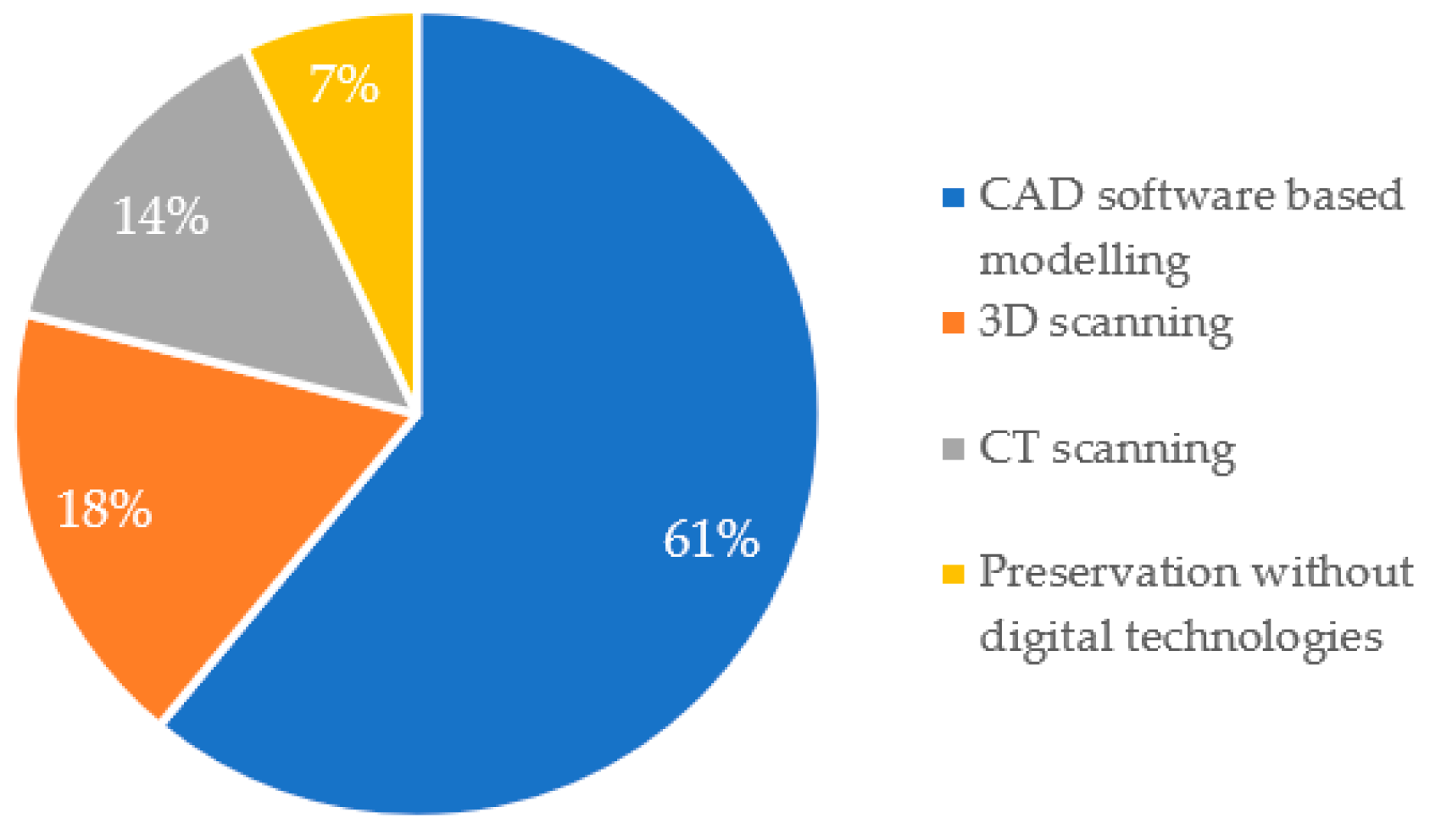
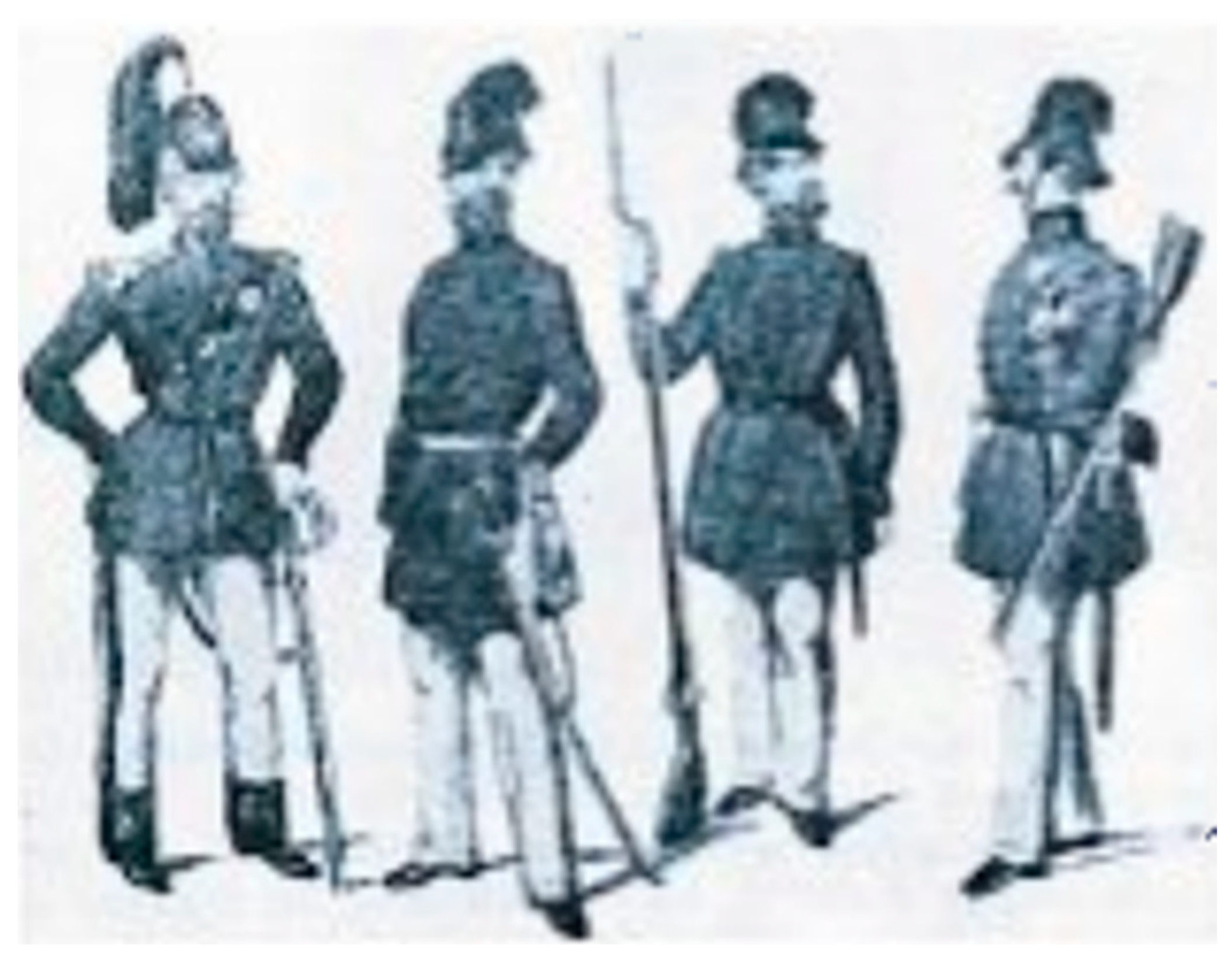
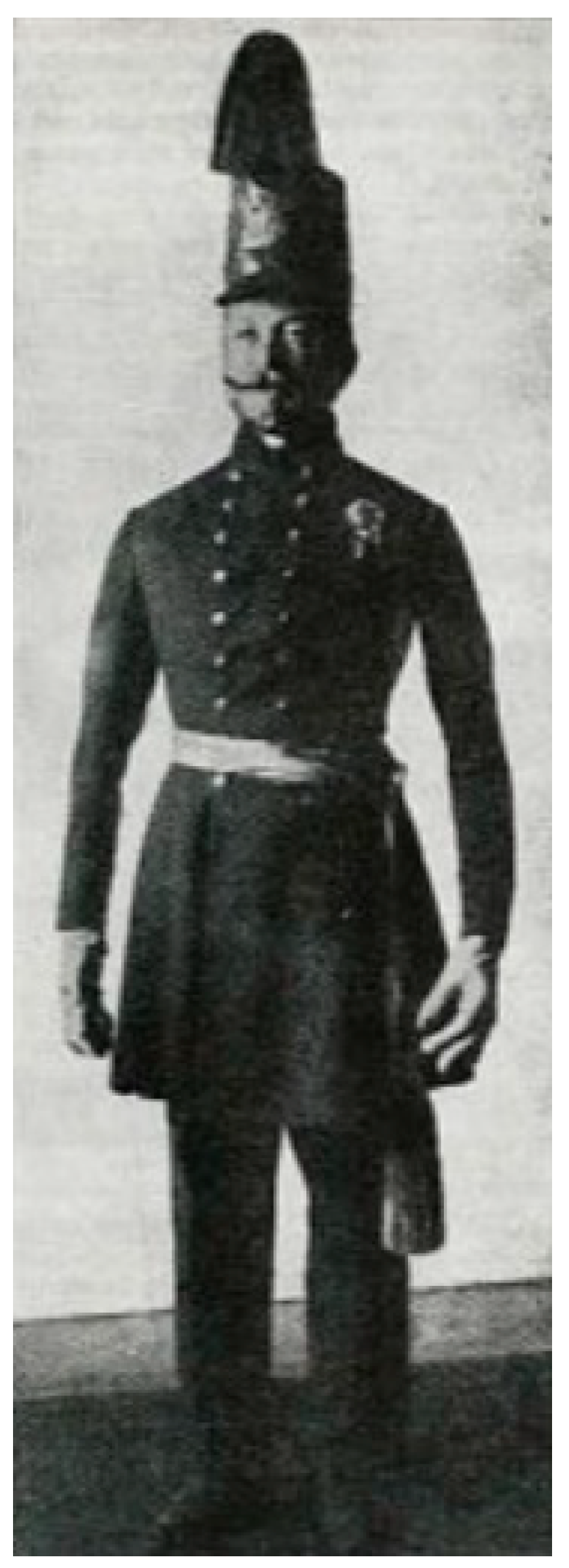
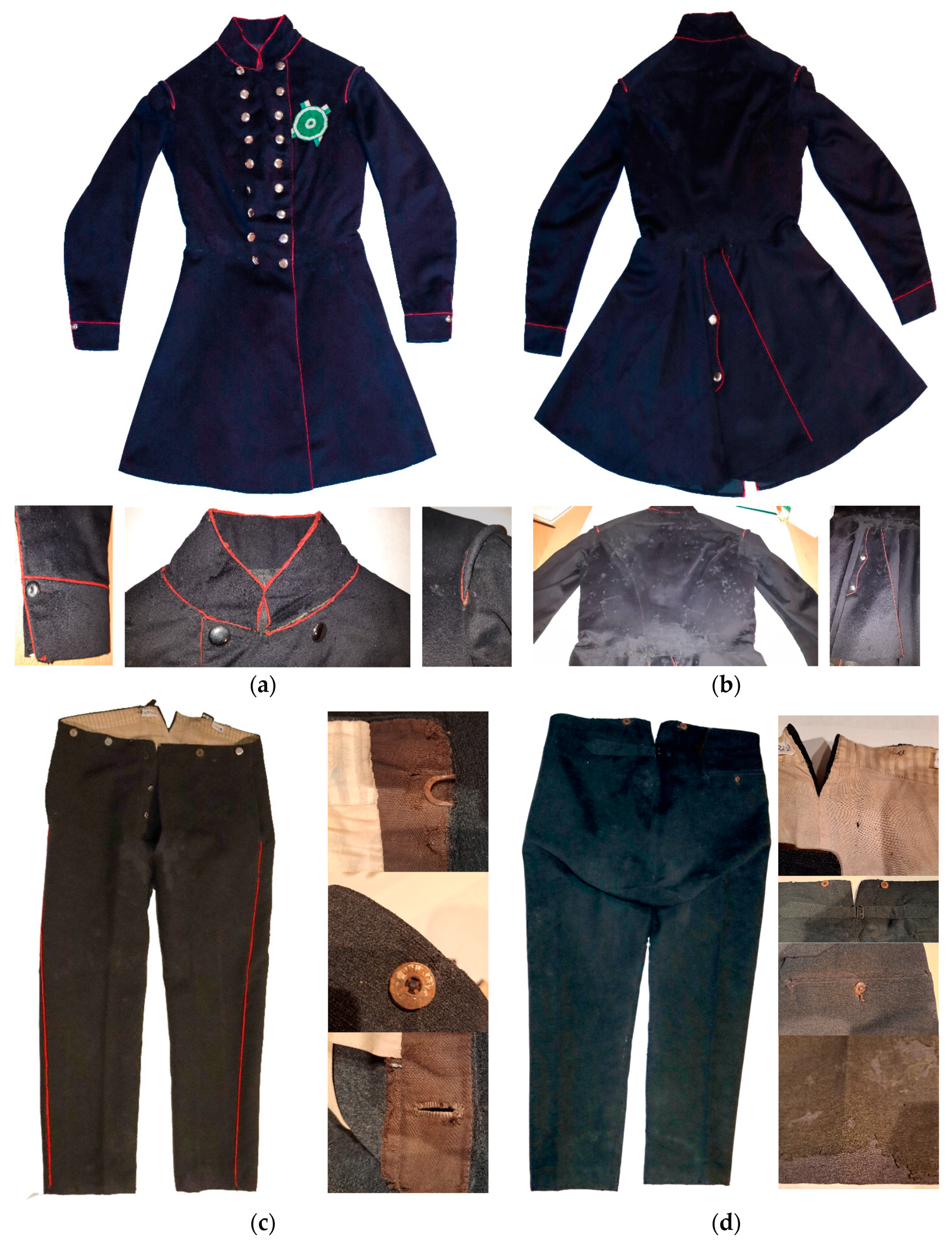

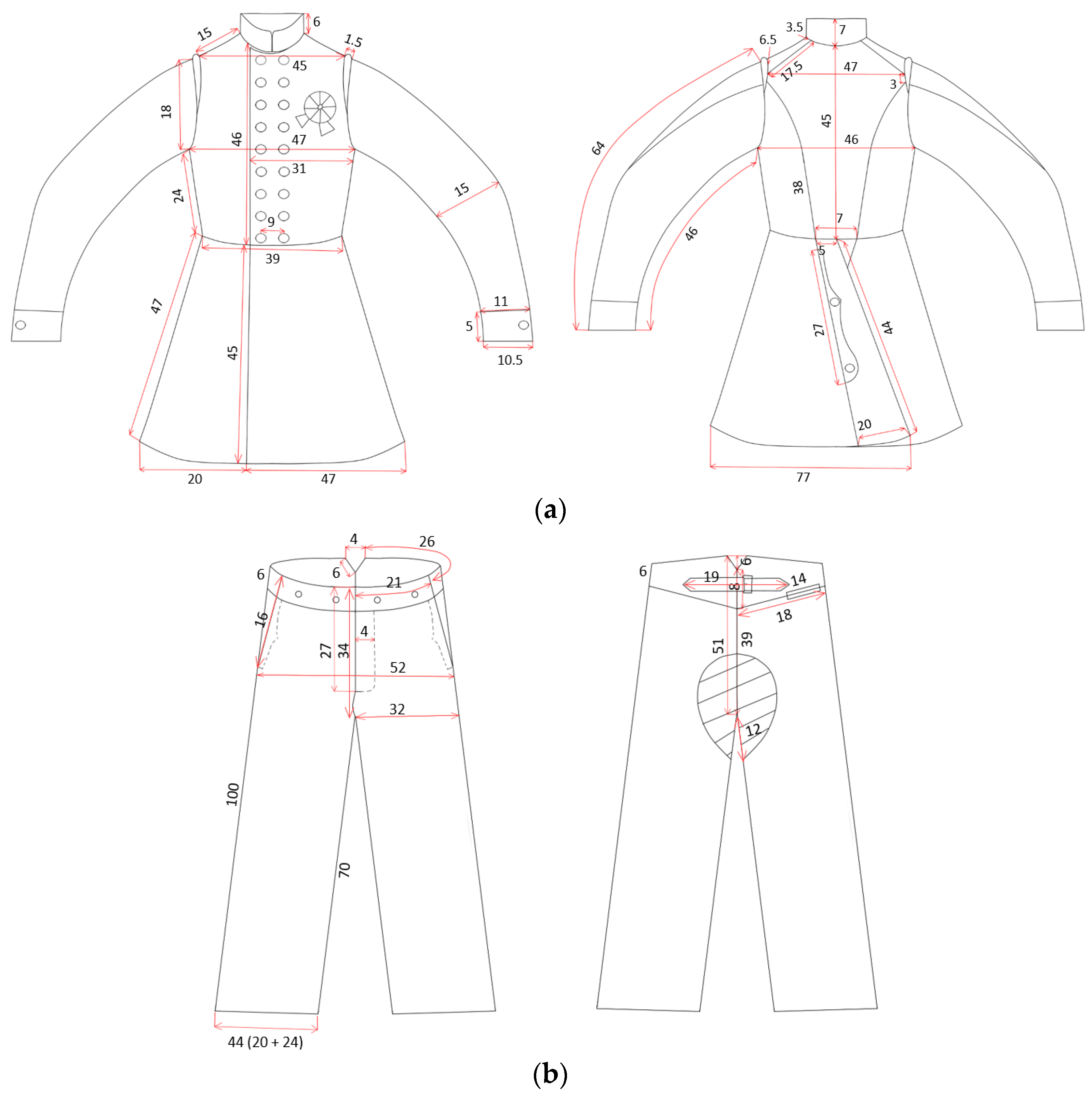
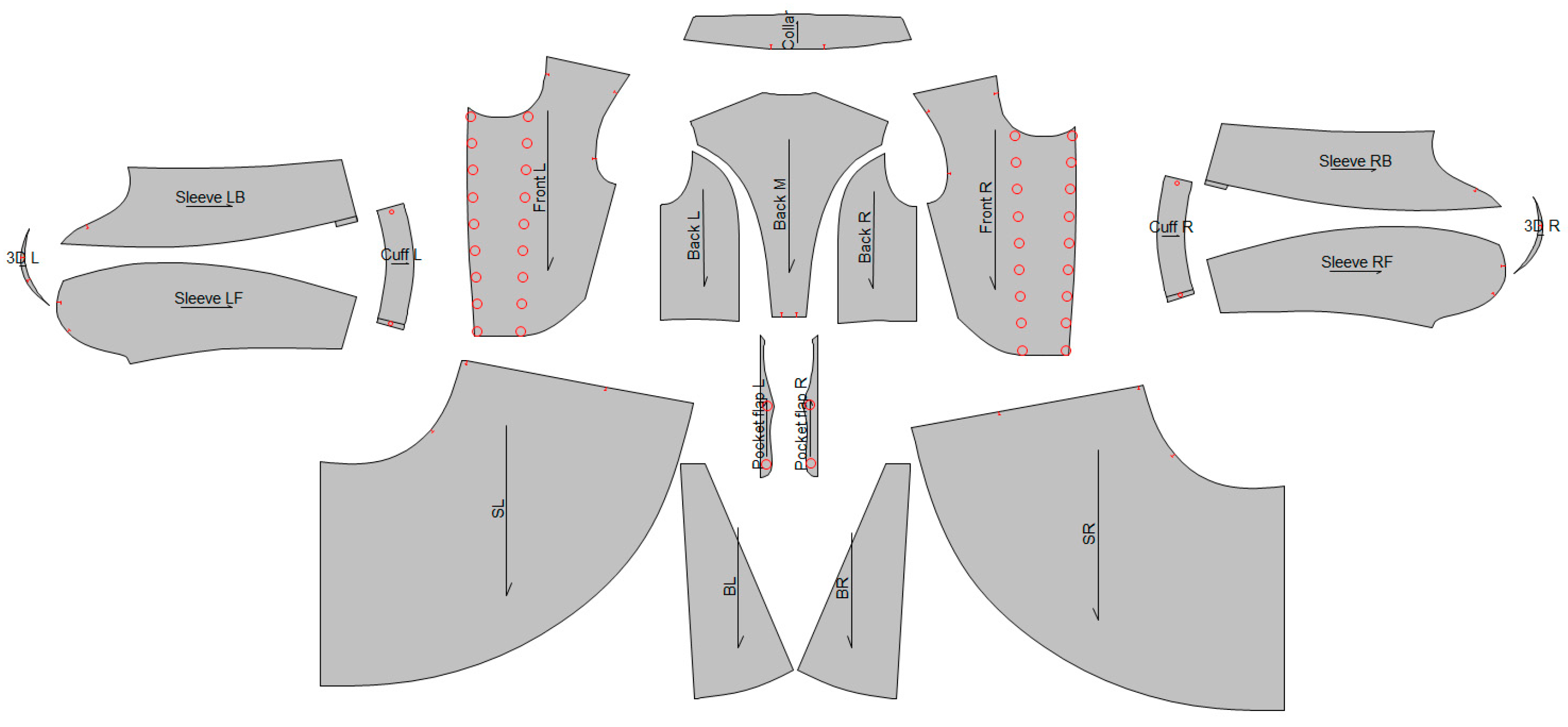
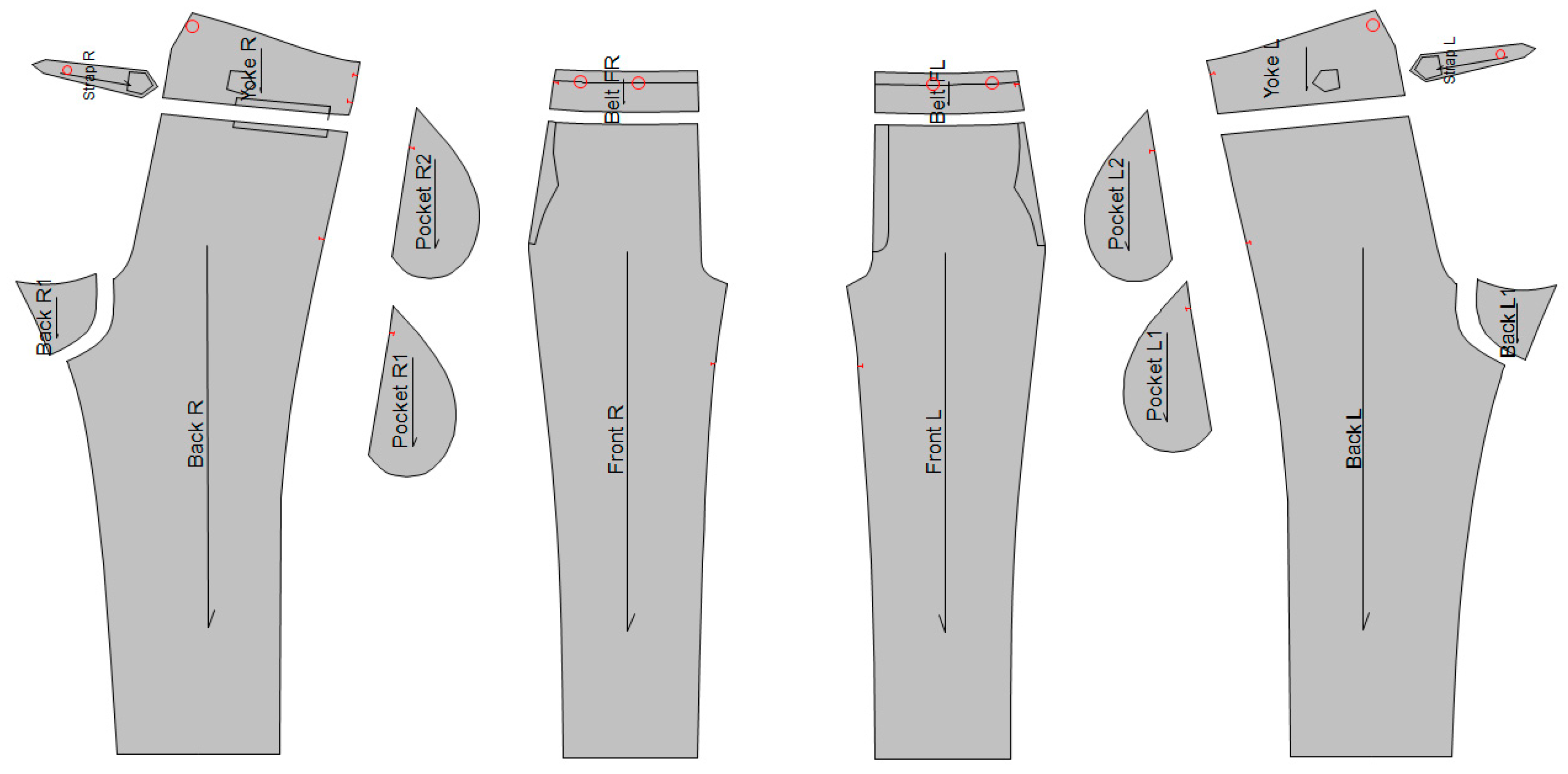



| Measure Name | Label | Basic Body Meas. (cm) | Equations for Calc. of Prop. Measures [71] | Construction Measure (cm) |
|---|---|---|---|---|
| Body height | BH | unknown | ||
| Chest circumference | CC | unknown | 93.0 | |
| Waist circumference | WC | unknown | 78.0 | |
| Hips circumference | HC | unknown | ||
| Back width | BW | 2/10 CC + (0.5 to 1.5 cm) | 16.7 | |
| Chest width | CW | 2/10 CC + (1.0 to 2.0 cm) | 17.2 | |
| Armhole width | ArW | 1/8 CC + (2.5 to 3.5 cm) | 12.6 | |
| CC = 81.0 cm; EA = 12.0 cm | ||||
| Neck width | NW | 1/10·1/2 CC + 3.0 cm | 7.05 | |
| Shoulder blades height | SBH | 1/8 CC + (11.5 to 12.5 cm) | 21.6 | |
| Scye depth | SD | SBH + (1.0 to 2.0 cm) | 22.6 | |
| Back length | BL | 45.0 | ||
| Sleeve length | SlL | 64.0 | ||
| Shoulder length | ShL | 15.0 | ||
| Sleeve armhole circ. | SAC | control measure | 40.0 | |
| Model length | ML | 91.0 | ||
| Measure Name | Label | Basic Body Meas. (cm) | Equations for Calc. of Prop. Measures [71] | Construction Measure (cm) |
|---|---|---|---|---|
| Body height | BH | unknown | ||
| Waist circumference | WC | unknown | 98.0 | |
| Hips circumference | HC | unknown | 104.0 | |
| Outside trousers length | OTL | 100.0 | ||
| Inside trousers length | ITL | 70.0 | ||
| Knee height | KH | ½ ITL + 1/10 ITL | 42.0 | |
| Crotch depth | CD | OTL − ITL | 30.0 | |
| Front trouser width | FTW | ¼ HC + (0.0 to 0.5 cm) | 24.5 | |
| Back trouser width | BTW | ¼ HC + (3.00 to 3.5 cm) | 27.5 | |
| HC = 98.0 cm; EA = 6.0 cm | ||||
| Total crotch width | TCW | ¼ HC − (3.0 to 4.0 cm) | 21.5 | |
| Front crotch width | FCW | 1/10·1/2 HC + 1.0 cm | 5.9 | |
| Back crotch width | BCW | TCW − FCW | 15.6 | |
| Total BTW | TBTW | BTW + BCW | 43.6 | |
| Circumference of the trouser length | 44.0 | |||
| Jacket | |||
|---|---|---|---|
Basic material Thickness: 0.93 mm Colour (RGB): 0 0 70 | Interlining 1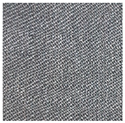 Thickness: 0.39 mm Colour (RGB): 28 28 28 | Interlining 2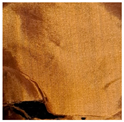 Thickness: / Colour (RGB): 127 78 23 | Reinforcement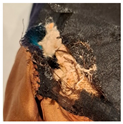 Thick: 26.0 mm Medium: 14.0 mm Thin: 10.0 mm |
Piping cord tape Wide: 3.0 mm Colour (RGB): / | Twisted cord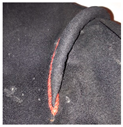 Ø: 3.0 mm Colour (RGB): / | Buttons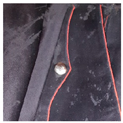 Front/back Ø: 20.0 mm Sleeves Ø: 13.0 mm | Cockade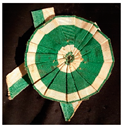 Ø: 80.0 mm Green (RGB): 0 71 21 |
| Trousers | |||||||
|---|---|---|---|---|---|---|---|
Basic material 1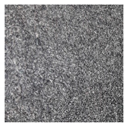 Thickness: 1.55 mm Colour (RGB): 58 58 58 | Basic mat. 2,3 (belt tape, (yoke, fly pockets)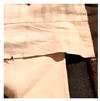 Thickness: / Colour (RGB): 255 239 222 | Basic mat. 4 (crotch)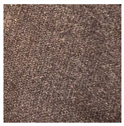 Thickness: 1.83 mm Colour (RGB): 58 58 58 | Piping cord tape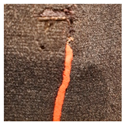 Wide: 3.0 mm Colour (RGB): / | ||||
| Buttons | Eye and hook Wide: 12.75 mm | Buckle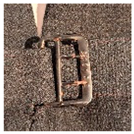 Wide: 2.5 × 1.7 mm | |||||
Fly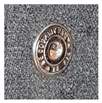 Ø: 15.0 mm | Suspenders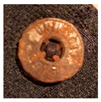 Ø: 17.0 mm | Welt pocket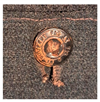 Ø: 13.6 mm | |||||
| Measure Name | Label | Virtual 3D Body Models Dimensions (cm) | |||||
|---|---|---|---|---|---|---|---|
| SBM | BMJ1_EA12 | BMJ2_EA14 | |||||
| Body height | BH | 179.0 | 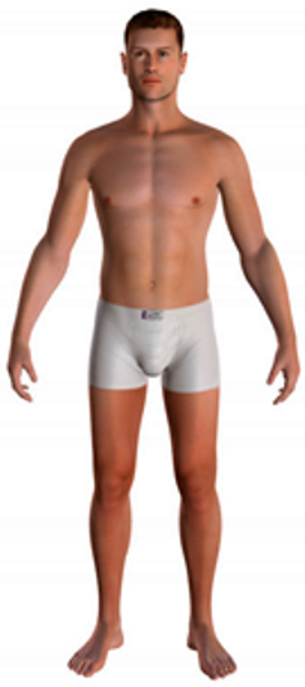 | 176.0 | 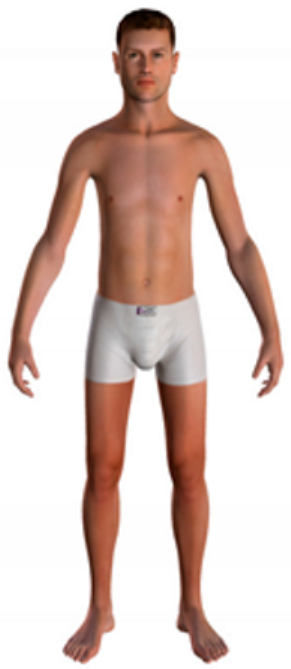 | 176.0 | 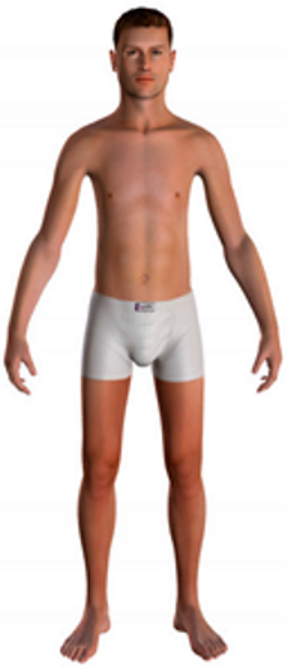 |
| Chest circumference | CC | 104.9 | 81.0 | 79.0 | |||
| Under chest circ. | UCC | 96.3 | 76.0 | 74.0 | |||
| Cross shoulders | CS | 44.5 | 40.6 | 40.6 | |||
| Waist circumference | WC | 82.7 | 72.0 | 72.0 | |||
| Hips circumference | HC | 98.5 | 90.0 | 90.0 | |||
| Back length (meas.) | BL | 46.0 | 45.0 | 45.0 | |||
| Outside leg length | OLL | 109.5 | 107.5 | 107.5 | |||
| Inside leg length | IlL | 82.8 | 81.4 | 81.4 | |||
| Arm length | AL | 60.7 | 59.4 | 59.4 | |||
| Measure Name | Label | Virtual 3D Body Models Dimensions (cm) | |||||
|---|---|---|---|---|---|---|---|
| SBM | BMT1_BD1 | BMT2_BD2 | |||||
| Body height | BH | 179.0 | 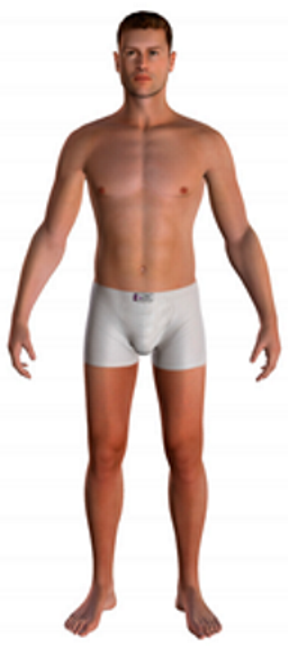 | 160.8 | 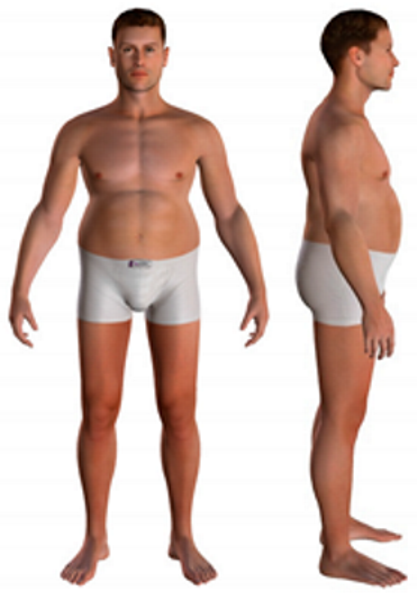 | 160.8 | 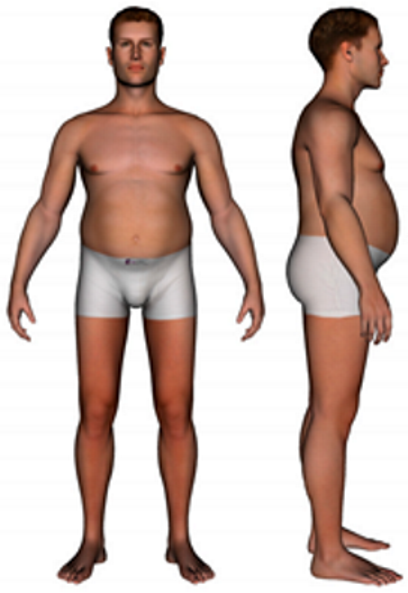 |
| Chest circumference | CC | 104.9 | 100.2 | 101.5 | |||
| Under chest circ. | UCC | 96.3 | 92.0 | 92.8 | |||
| Waist circumference | WC | 82.7 | 98.0 | 98.0 | |||
| Hips circumference | HC | 98.5 | 98.0 | 98.0 | |||
| Outside leg length | OLL | 109.5 | 100.0 | 100.0 | |||
| Inside leg length | IlL | 82.8 | 77.4 | 77.4 | |||
| Knee height | KH | 47.4 | 46.4 | 46.4 | |||
| Belly depth | BD | 20.7 | 26.5 | 28.5 | |||
Disclaimer/Publisher’s Note: The statements, opinions and data contained in all publications are solely those of the individual author(s) and contributor(s) and not of MDPI and/or the editor(s). MDPI and/or the editor(s) disclaim responsibility for any injury to people or property resulting from any ideas, methods, instructions or products referred to in the content. |
© 2024 by the authors. Licensee MDPI, Basel, Switzerland. This article is an open access article distributed under the terms and conditions of the Creative Commons Attribution (CC BY) license (https://creativecommons.org/licenses/by/4.0/).
Share and Cite
Rudolf, A.; Pučko, B.; Hren Brvar, M.; Remic, K. Using Digital Technology for the Sustainable Preservation of Clothing Heritage: A Virtual Reconstruction of the 1848/49 Uniform. Sustainability 2024, 16, 7757. https://doi.org/10.3390/su16177757
Rudolf A, Pučko B, Hren Brvar M, Remic K. Using Digital Technology for the Sustainable Preservation of Clothing Heritage: A Virtual Reconstruction of the 1848/49 Uniform. Sustainability. 2024; 16(17):7757. https://doi.org/10.3390/su16177757
Chicago/Turabian StyleRudolf, Andreja, Barbara Pučko, Maja Hren Brvar, and Katarina Remic. 2024. "Using Digital Technology for the Sustainable Preservation of Clothing Heritage: A Virtual Reconstruction of the 1848/49 Uniform" Sustainability 16, no. 17: 7757. https://doi.org/10.3390/su16177757





